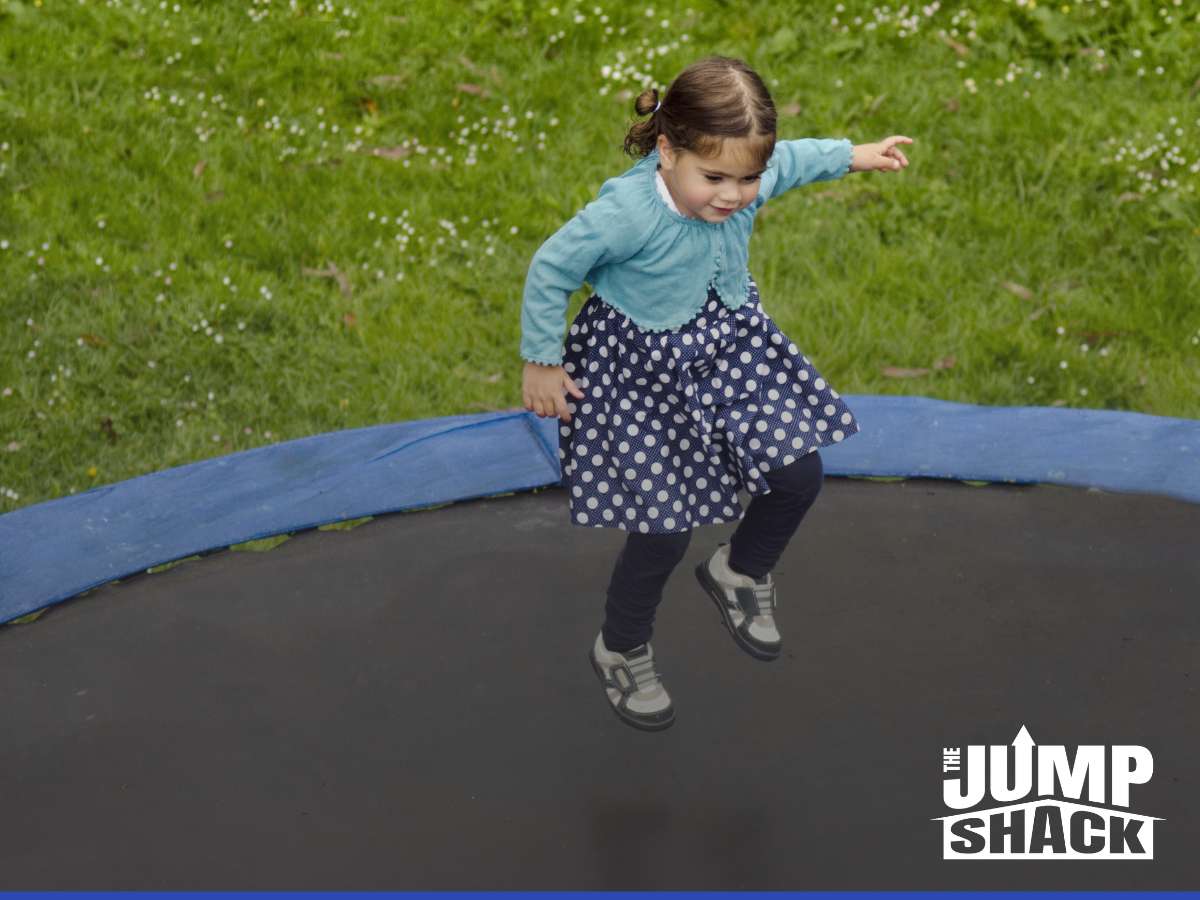Benefits Of Nets & Enclosures on In-Ground Trampolines: Prevent Falls, Protect Structure & Ensure Backyard Safety
In-ground trampolines offer a sleek, low-profile design that blends seamlessly into any backyard, making them a favorite for families seeking both style and safe outdoor fun. But while the jumping mat often takes center stage, it’s the nets and enclosures quietly working behind the scenes that make all the difference when it comes to safety. These unsung heroes help prevent falls, preserve the trampoline’s structure, and protect the space around it!
If you want your in-ground trampoline to remain a source of worry-free enjoyment, knowing when—and why—to replace these essential components is key. Let’s take a closer look at how to keep your setup secure and long-lasting.

Why Nets & Enclosures Are Crucial for In-Ground Trampoline Safety
Nets and enclosures are essential safety features, especially in busy households or shared play areas. Even though in-ground trampolines are naturally safer due to their low profile, having a reliable net adds an important layer of protection, particularly for kids or when doing trampoline exercises that involve higher jumps. These barriers help to:
- Keep jumpers safely inside the jumping area.
- Prevent collisions with nearby obstacles in the backyard.
- Protect the trampoline’s frame and components from debris, or leaves.
Ultimately, well-maintained nets not only boost safety but also help preserve your trampoline’s condition, making every bounce worry-free and fun.
Key Factors That Impact The Lifespan Of In-Ground Trampoline
There’s no universal expiration date for nets and enclosures, but several variables can shorten or extend their life. Paying attention to these factors will help you gauge the right moment for a replacement:
1. Quality Of Materials
Not all nets are created equal. Higher-end in-ground trampoline models—like those from Capital Play—often feature UV-resistant and weatherproof materials that extend longevity. That said, even the best materials eventually need replacement.
2. Maintenance Habits
Routine inspections and cleaning can significantly impact durability. Letting debris accumulate, ignoring small tears, or failing to re-secure loose areas can accelerate the wear and tear process.
3. Frequency Of Use
The more often your trampoline is used for fun, the faster its components will wear out. Daily use, especially by multiple jumpers or in a high-energy household, can lead to quicker deterioration.
4. Exposure To The Elements
Even the most durable materials wear down under harsh sun, rain, snow, and wind. UV rays, in particular, can weaken net fibers, making them brittle or discolored. In humid or rainy climates, mold and mildew may develop if the net isn’t properly maintained.
Signs You Need To Replace Your Trampoline Nets and Enclosures
A proactive approach helps you avoid sudden failures or accidents. Look for these visible and functional signs to know when it’s time for a replacement:
- Tears or holes in the netting, even small ones, can compromise safety.
- Fraying edges and weakened stitching, especially near zippers or connection points.
- Fading or brittleness from long-term sun exposure.
- Sagging or loosened nets that no longer stay taut.
- Broken fasteners, zippers, or support poles that can’t be easily repaired.
If you notice any of these issues, it’s best to act quickly and replace the enclosure system to maintain your trampoline’s safety standards.
Essential Guidelines For Replacing In-Ground Trampoline Nets & Enclosures
While every household and environment is different, there are a few general rules to follow when it comes to trampoline net and enclosure replacements:
Annual Inspection
It’s essential to conduct a thorough inspection at least once a year—ideally at the start of spring or right after winter. These checks allow you to spot early signs of wear such as tears, stretched areas, or weakened stitching, which often develop during periods of disuse or after exposure to harsh weather like heavy snow, rain, or intense sun.
Regular inspections help ensure your trampoline remains safe and ready for fun throughout the season!
Replace Every 2–5 Years
Quality trampoline nets and enclosures are designed to last between 2 and 5 years under typical conditions. However, this lifespan can vary significantly depending on factors such as frequency of use, local climate, and how well the trampoline is maintained.
For example, a trampoline used daily by multiple jumpers in a sunny, hot environment may require net replacement closer to the 2-year mark, while one used occasionally in a mild climate might stretch to 5 years or more. Monitoring the condition regularly helps you make an informed decision rather than relying solely on time.
Follow Manufacturer Recommendations
Always refer to the manufacturer’s instructions for replacement schedules and procedures. These guidelines are developed based on extensive testing of materials under different conditions and usage patterns, ensuring optimal safety and performance.
Ignoring or postponing recommended replacements may compromise your trampoline’s safety and could void warranties!
How To Extend The Life Of Your Trampoline Enclosures
Replacing nets is important, but maximizing their lifespan is just as valuable for anyone who enjoys fun and safe bouncing in their backyard. Here are some practical steps to help you get the most out of your trampoline accessories:
Regular Cleaning
Dust, dirt, tree sap, and moisture can all degrade material. Clean your trampoline regularly with mild soap and water, especially after storms or pollen-heavy seasons.
Limit Harsh Exposure
If possible, position your trampoline in a shaded area. A tree canopy or sunshade can help reduce UV damage, keeping nets strong and elastic for longer.
Install Weather Accessories
Investing in trampoline accessories like protective covers or anchor kits will help safeguard your trampoline in both summer and winter. Covers protect from snow buildup and UV rays, while anchor kits keep everything in place during high winds.
Store During Harsh Winters
If you live in an area with harsh winters, consider removing and storing nets indoors during the coldest months. Snow, ice, and freezing temperatures can drastically weaken materials.
Professional Replacement vs. DIY: Knowing When To Call The Experts
Many trampoline owners can handle minor repairs like tightening straps or patching small holes, but replacing nets or enclosures is more complex. Proper fit and secure installation are essential for safety, and incorrect or mismatched replacements can compromise the trampoline’s integrity and increase the risk of accidents. At The Jump Shack, we strongly recommend professional replacement in several cases:
- If the existing net is severely damaged, stretched out, or no longer holds tension properly.
- When you’re unsure about finding the correct replacement that fits your in-ground trampoline model.
- If you want to upgrade to a higher-quality net or enhanced safety enclosure.
- Whenever structural components like attachment points or frame connections also show signs of wear.
For instance, our team of specialists can guide you through selecting the right parts, ensuring they meet manufacturer specifications, and handling the installation with expert precision, so you can get back to safe, worry-free fun.
Trusted Experts For Premium In-Ground Trampoline Nets & Installation
If you’re looking for high-quality net replacements or expert installation, The Jump Shack is your trusted source for premium in-ground trampoline solutions.
We offer top-rated Capital Play products, expert guidance, and support for long-term trampoline care. For the best results, trust professionals for in-ground trampoline installations to ensure safety and quality. Contact us today!
The Jump Shack
1528 W San Pedro St #4
Gilbert, AZ 85233
Tel: (800) 414-2001
Email: [email protected]
Website: aztrampoline.com







